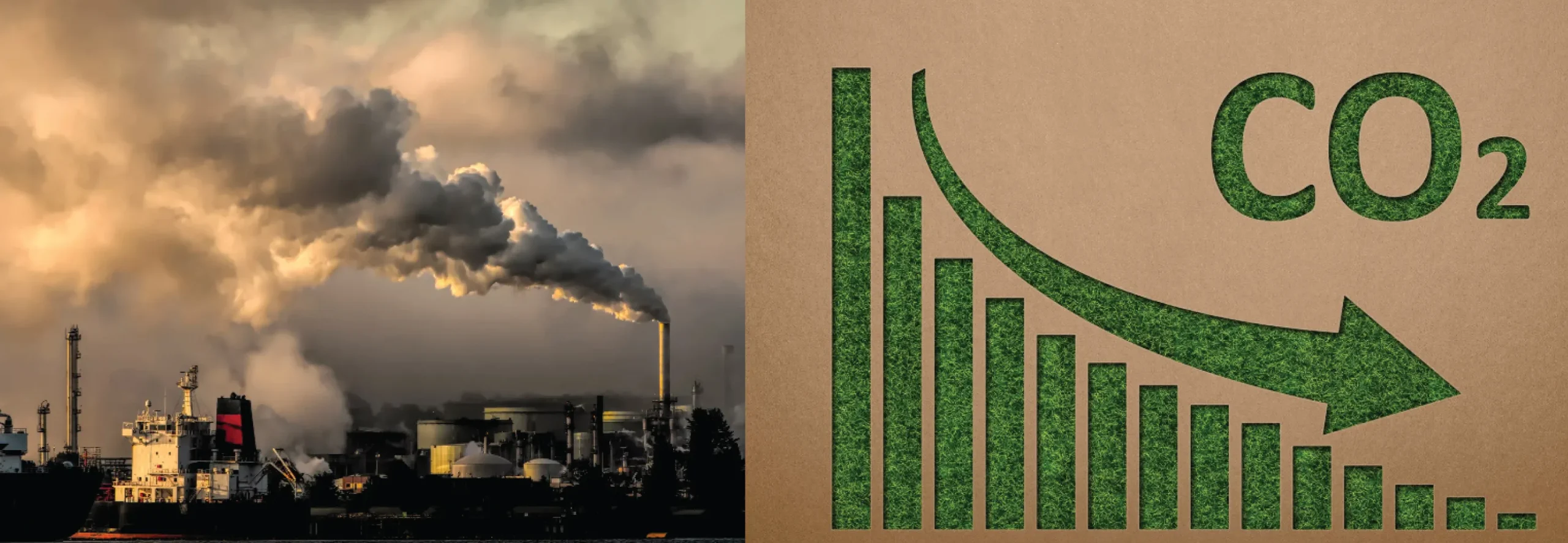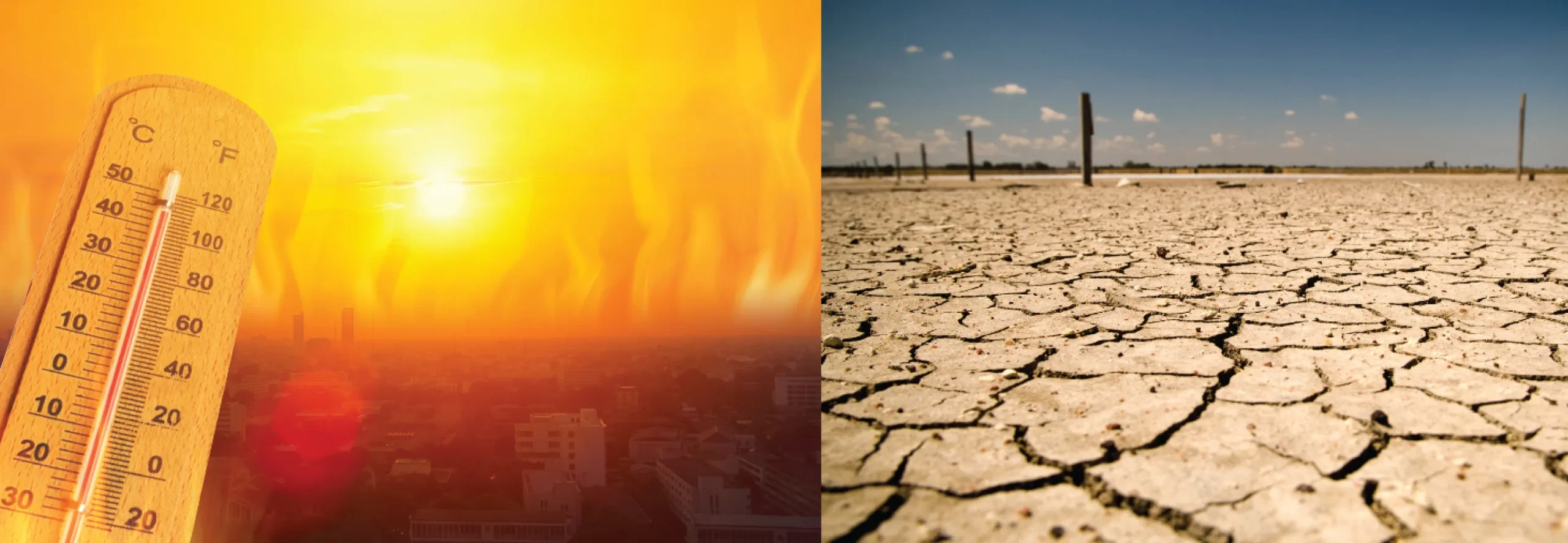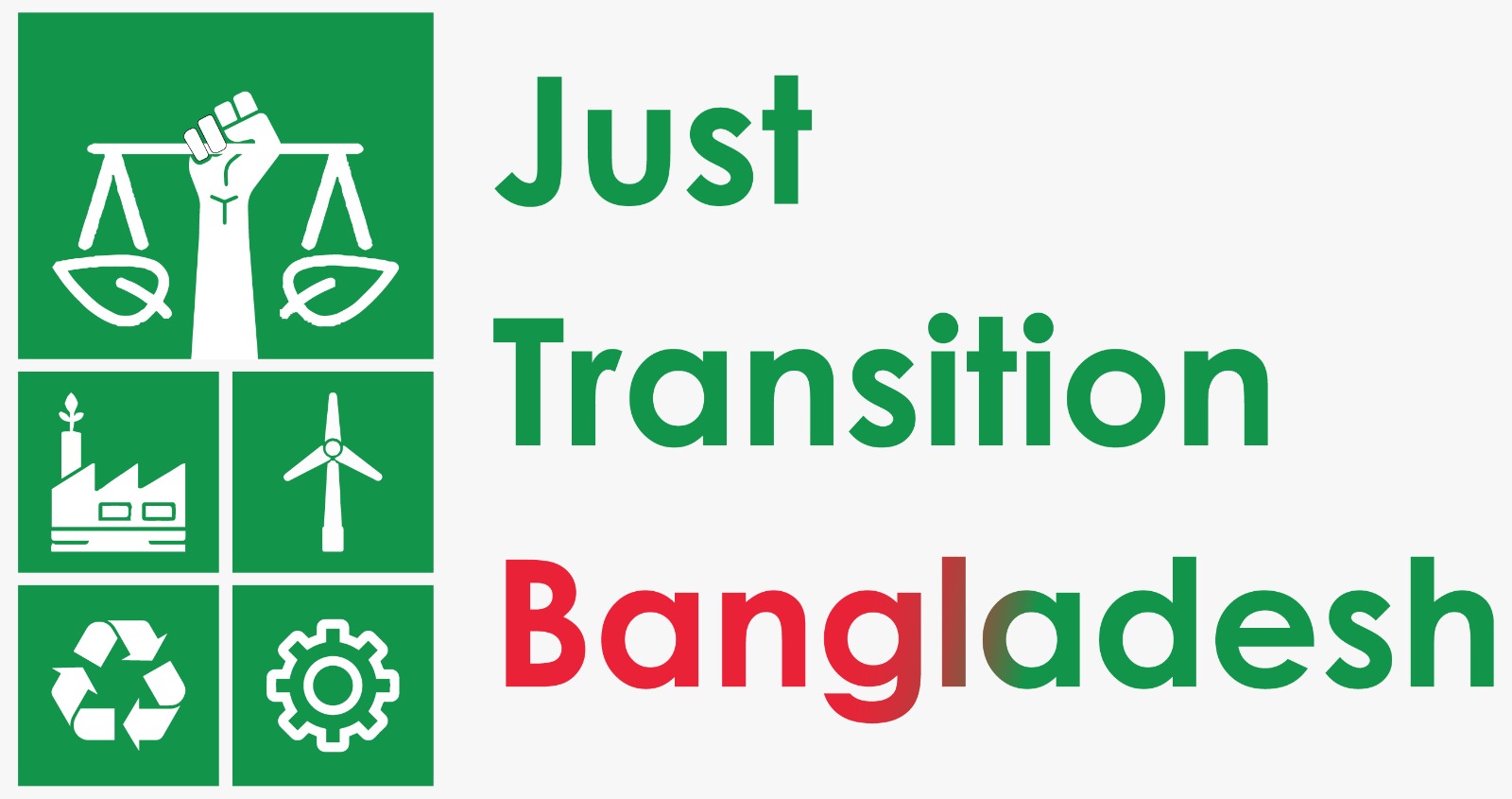
The current trend of automation and information exchange in industrial technology is referred to as “Industry 4.0”, also known as the Fourth Industrial Revolution. It is based on artificial intelligence (AI), big data analytics, advanced robotics, 3-D printing, nanotechnology and advanced biotechnology. Co-refers to the incorporation of digital technology into the production process, which will essentially make the production process automated, resulting in the loss of many jobs (eg, the jacquard machine in the sweater industry).
Unplanned use of technology poses a threat to the traditional labor market. According to an ILO study, about 53.8 lakh jobs in 5 sectors of Bangladesh are at risk due to modern technology, of which the ready-made garment industry (RMG) is one of them. About 27 lakh or 60% of job losses will occur in RMG alone.
Tasks previously performed by humans are being performed by machines, thereby reducing the demand for manual labour. By 2030, 75 million people worldwide will lose their jobs and 14% will be forced to change their occupation. Many workers are losing their jobs due to lack of skills related to new technologies. Incomes of those who can adopt modern technology are increasing, those who are not are not. As a result, economic inequality is increasing.
The potential negative impacts cannot be mitigated if policies and businesses are not aligned, integrating the principles of Just Transition into the implementation of Industry 4.0. which will help create a more inclusive and sustainable future for workers and stakeholders. Without adequate training and alternative employment arrangements for those who will lose their jobs and be forced to change occupations due to modernization, the process will be dire.

Carbon emissions, primarily carbon dioxide (CO2), are a significant contributor to global warming and climate change. Carbon dioxide, although less visible than traditional pollutants like smoke or plastic waste, is a pollutant. It falls within the category of harmful particles and gases that can reach harmful concentrations in the atmosphere, contributing massively to air pollution and thus, environmental degradation.
Global energy-related CO2 emissions grew by 1.1% in 2023, increasing 410 million tons (Mt) to reach a new record high of 37.4 billion tons (Gt). This compares with an increase of 490 Mt in 2022 (1.3%). Emissions from coal accounted for more than 65% of the increase in 2023.
Carbon emissions result from the combustion of fossil fuels such as coal, natural gas, and oil, as well as the burning of biological materials like solid waste and trees. Major sources include transportation, electricity production, industry, and agriculture, with transportation alone accounting for nearly 29% of greenhouse gas emissions in the U.S.
Between 2019 and 2023, total energy-related emissions increased around 900 Mt. Without the growing deployment of five key clean energy technologies since 2019 – solar PV, wind, nuclear, heat pumps, and electric cars – the emissions growth would have been three times larger.
This Carbon emissions-led global warming drives climate change which results in extreme weather events such as tropical storms, wildfires, and severe droughts. It also affects crop production, disrupts natural habitats, and increases respiratory diseases in humans due to heightened air pollution.
The Paris Agreement aims to limit global warming to well below 2 degrees Celsius, preferably to 1.5 degrees Celsius, compared to pre-industrial levels. Achieving this goal requires significant reductions in greenhouse gas emissions by 2030 and reaching net-zero emissions by mid-century.
Despite efforts to mitigate these emissions, global carbon dioxide levels from fossil fuels continue to rise. This increase threatens economic stability and environmental health, emphasizing the urgent need for activities like; transitioning to renewable energy, enhancing energy efficiency, adopting sustainable agricultural practices, enacting policies and regulations to limit emissions, and raising public awareness to encourage individual and collective action to reduce carbon emissions and protect the environment and ensuring a sustainable future.

Climate change refers to significant and long-term changes in Earth’s average temperature, weather patterns and other climate elements.
As a result of climate change, global warming and reduction of working hours, river erosion, flood and unemployment, increase of sea water level and migration, reduction of production of agricultural products etc.
- Melting of polar ice caps is causing sea level rise and coastal areas are sinking. If this process continues, the sea level of Bangladesh will increase by 0.3 meters by 2050 and by 2100 it will increase to 0.74 meters.
- Between 1980 and 2008, Bangladesh experienced a total of 219 natural disasters. Bangladesh is now facing many natural disasters than before.
- Heavy rains, flooding and river erosion are increasing. Floods of 1988, 1998 and 2004 left two-thirds of Bangladesh under water. Some regions are experiencing drought as well.
- Both the environment and the local people are suffering due to salinity intrusion in the southwestern coastal districts. The southern part of Khulna and Satkhira districts is highly saline and poor.
- According to Bangladesh Bureau of Statistics (BBS) report, both cultivable land and rice production have decreased significantly due to climate change. In just two years, the production of Aman rice in Satkhira district has decreased by 1 lakh tonnes. As rice production declines, the risk of poverty and food shortages increases.
Many working people including farmers are losing their livelihood due to frequent floods, river erosion, salinity etc. If social security is not ensured, these people will be at great risk and their future will be uncertain.

We use the environment around us in many ways. As a result of which various changes occur in the environment. When these changes cause harm to us, it is called environmental pollution. Environmental pollution is harmful to humans and other animals and their environment. The environment is polluted by various pollutants and toxic substances, which hinder the normal movement or living of the people. At the same time, it also affects people’s livelihood. The most common forms of environmental pollution are air pollution, water pollution and soil pollution.
- According to a 2022 statistic, 97.9% of people in Bangladesh are exposed to hazardous air pollutants. As a result of air pollution, workers in various sectors, including common people, face various diseases and their work capacity decreases. The productivity of the workers is reduced and their jobs are at risk.
- Transport workers are most exposed to air pollution.
- The workers who live in the vicinity of various factories such as garments, tanneries etc. are affected by various diseases by consuming water contaminated by the waste of the factories.
- Medical treatment costs workers huge sums of money and many spend their entire life capital on medical expenses. At the same time, they are forced to take the burden of debt on their heads.
- Farmers are the most affected by soil pollution. Farmers are forced to change their profession to other profession but they cannot benefit from other profession as well because they do not have any other skills.
As a result of environmental pollution, workers suffer from various diseases and lose their ability to work. In many cases, their factories or workplaces are closed due to pollution. There is still no significant replacement policy for these jobless workers.

Fossil fuels are energy sources derived from the fossilized remains of plants and animals over millions of years. These non-renewable resources include coal, crude oil, and natural gas, and are also used to produce products like plastics and steel.
Fossil fuels—oil, coal, and natural gas—have powered vehicles, businesses, and homes for over a century, meeting about 80% of global energy needs according to the U.S. Energy Information Administration (EIA). However, their use comes with significant environmental and health costs.
Disadvantages of Fossil Fuels
- Land Degradation: Extraction processes such as strip mining and fracking damage ecosystems and wildlife habitats.
- Water Pollution: Extraction contaminates water sources, with coal mining, oil spills, and fracking fluids being major pollutants.
- Global Warming: Fossil fuel combustion releases large amounts of carbon dioxide, a major greenhouse gas. In 2018, 89% of global CO2 emissions came from fossil fuels and industry. The average global temperature has increased by 1°C, with further warming risking severe impacts like sea level rise and extreme weather.
- Ocean Acidification: Since the Industrial Revolution, ocean acidity has increased by about 30%, harming marine life and coastal economies.
Transitioning to renewable energy and enhancing energy efficiency are key to reducing fossil fuel reliance. Renewable sources like wind and solar are becoming more cost-effective and are expected to be cheaper than fossil fuels. Energy efficiency has significantly contributed to U.S. energy needs over the past 40 years.
Alternatives to burning fossil fuels include renewable energy sources like hydroelectricity, wind power, and solar energy. Clean energy from nuclear power plants is another alternative to burning fossil fuels. The benefit of transitioning to clean energy is a significant reduction in emissions. Nuclear energy and renewable energy sources have no emissions, which can slow the effect of climate change around the world. A switch to entirely renewable energy systems would provide the best alternative to fossil fuels. Fossil fuels are non-renewable, meaning once the natural resource is diminished, we will not be able to continue using it. On the other hand, sustainable energy sources provide us with a supply we can never run out of, meaning increased energy security for future generations.

Global warming is one of the major environmental problems in the world today. Global warming refers to the gradual increase in the average temperature of the earth.
Burning of fossil fuels like coal, oil, natural gas etc. releases carbon dioxide and other greenhouse gases into the atmosphere. Again, due to deforestation, the rate of carbon dioxide absorption by plants is also decreasing. As a result, the average temperature of the earth is gradually increasing through the greenhouse effect. Earth’s climate is also changing due to global warming.
- According to a study, Bangladesh is losing 7 billion working hours a year due to extreme heat caused by global warming.
- An increase in temperature of just 2-4 degrees Celsius could result in the loss of 31-57 billion working hours annually in Bangladesh.
- Workers in the informal sector face the greatest risk due to global warming. For example, farmers, construction workers, transport workers, day laborers etc.
- Workers suffer from various problems like dehydration, heat stroke, fatigue, heat cramp and lose work capacity.
- The United Nations estimates that by 2050, sea level rise will submerge 17% of Bangladesh and displace 20 million people.
The loss of working hours is causing the country to lag behind economically. At the same time, there is a risk in the job of the workers who lost their ability to work due to excessive heat. People who have lost their homes are migrating to cities and joining the informal sector where they have no job security.

The name greenhouse comes from the name of a house made of glass or other transparent material used for farming in cold countries. These greenhouses re-radiate the light they receive from the sun during the day in relatively long wavelengths at night. As a result, heat enters the greenhouse from the outside but cannot escape. As a result, the inside of this room is warm even in extreme cold. Hot country vegetables can be grown easily in this house.
Greenhouse gases, such as carbon dioxide (CO2), methane (CH4), nitrous oxide (N2O), chlorofluorocarbons (CFCs) etc., form a layer in the Earth’s atmosphere just like a glass house called a greenhouse. Through this layer, the sun’s heat enters the earth but cannot escape. As a result, as time passes, our Earth is slowly getting hotter than before.
- Greenhouse effect is the main cause of global warming. According to a data from 2023, there are 400 carbon particles in 1 million air particles, which is 50 percent more than in the pre-industrial era.
- The melting of ice at the Earth’s poles raises the sea level and inundates coastal areas. Bagerhat, Khulna and Satkhira districts suffer a total of 13% salinity which will increase to 16% by 2050.
- Many people in coastal areas of low-lying countries like Bangladesh are losing their homes and agricultural land. Crop production will decrease by 30% by 2100.
- The Ozone layer of the atmosphere (O3) prevents the sun’s harmful ultraviolet rays from entering the earth and protects us from cancer. But greenhouse gases are damaging this Ozone layer.
- Greenhouse gases mix with rainwater and fall to the ground as acid rain. It mixes with water in ponds, rivers etc. and makes the water acidic.
Fishermen and farmers in Bangladesh are at great risk. Many people are forced to change profession but due to lack of proper training they are not able to benefit in different profession as well.

Different types of chemicals are used in different industries. Some of these chemicals are very harmful. Chemicals that cause serious damage to health and environment are called hazardous chemicals. Harmful chemicals include – acids, alkalis, formalin, acetylene gas, phosgene gas, ammonia, benzoic acid, toluene, liquor ammonia, ethanol, barium chloride, dyes etc. Workers who are exposed to these chemicals face various risks and gradually lose performance.
- Liquid effluents from factories and tanneries get mixed with river water causing damage to river water and aquatic life. Using the water of that river can cause a lot of harm to other animals and even humans.
- European Union countries produced 282 million tons of chemical waste in 2017, of which 25% is harmful to the environment and 75% is harmful to health.
- Leather workers are at risk of developing skin problems such as dermatitis. Skin irritation, redness and itching may also occur. Many chemicals can cause respiratory problems such as bronchitis, asthma and lung cancer.
- Some chemicals are known to affect the reproductive system, resulting in reduced fertility, birth defects and other problems.
- Many chemicals are carcinogenic, meaning they can cause cancer.
Workers exposed to harmful chemicals for long periods of time are at risk of life. But they need adequate training and financial support to slowly move out of this risky job which is yet to be ensured.

Migration generally refers to the movement of a population from one area to another or the arrival of a population from another place in that area. Migration is a first or third world issue or related to industrialization and urbanization and related to employment opportunities. For example, most of the migration is the migration of workers or labour.
Migration is divided into two categories:
- Internal migration: When a person moves from one region of his country to another in search of livelihood and work, he is an internal migrant.
- External migration: When a person leaves his country and settles in another country for the rest of his life, he is an external migrant.
- According to a 2011 report, 9.71% of people in Bangladesh have migrated at least once in their lifetime. A worker is forced to migrate when he loses his own livelihood in his home region and has no other job opportunities due to lack of skills.
- Fear of repeated disasters, poverty, food insecurity etc. are the main reasons behind migration.
- Rural to urban migration is increasing day by day in the context of rural poor Bangladesh. 53.1% of the total migrant population of Bangladesh migrated from rural to urban or urban to urban areas.
- Cities are under immense pressure and at the same time the livelihood of the people of the city is also at risk.
- Climate change could displace up to 15 million people in Bangladesh by 2050, which would be the worst forced migration in human history.
Most of the people who migrate to the cities do not get the job opportunity due to lack of skills. Many join the informal sector like rickshaw pullers, day laborers etc. where there is no job security or other benefits. As a result, they live in extreme danger and many end up in modern slavery. At the same time, they put additional pressure on the city which it cannot bear.

Net zero means reducing greenhouse gas emissions as close to zero as possible and absorbing existing greenhouse gases from the atmosphere through oceans and forests.
- The current average temperature of our earth is 15°, which was much lower (13.9°) before the industrial revolution and such a temperature is suitable for all organisms to live.
- It is estimated that without appropriate action, the global average surface temperature will rise significantly and the global average surface temperature increase this century is likely to exceed 3°C – causing some regions of the world to warm even more.
- To avoid climate change damage and preserve a habitable Earth, global temperature rise must be limited to 1.5°. Therefore, the Paris Agreement states that greenhouse gas emissions must be reduced by 45% by 2030 and reach net zero by 2050.
- In implementing this process, many fossil fuel-based industries will be shut down and many workers will be out of jobs.
- Reaching Net-Zero is a big challenge, which if not implemented in a planned manner through Just Transition, various problems including poverty, discrimination, unemployment will arise.
In the process of reaching net zero, it is important to provide sufficient alternative employment for workers who will be laid off. At the same time, adequate training is essential for them to succeed in those alternative jobs. Otherwise, many workers and their families will suffer.

Riverbank erosion is a significant environmental and socio-economic hazard with profound implications for communities and ecosystems worldwide. This natural process, driven primarily by the force of flowing water, can lead to substantial land loss along riverbanks, affecting human settlements, agriculture, and infrastructure. Globally, the impact of riverbank erosion is considerable, with the U.S. Army Corps of Engineers spending over $200 million annually to manage erosion along the Mississippi River.
The primary causes of riverbank erosion include natural factors such as high river flow velocity, sediment transport, and seasonal flooding. However, human activities also significantly contribute to the problem. Deforestation, land use changes, and river management practices, such as dam construction and altered river channels, increase the vulnerability of riverbanks to erosion.
Climate change further exacerbates these issues by altering precipitation patterns and increasing the frequency and intensity of extreme weather events, which in turn affects river flow dynamics and sediment transport. The impact of climate change on riverbank erosion is a complex interaction of changing weather patterns and rising temperatures, leading to more intense and unpredictable flooding and erosion.
In Bangladesh, riverbank erosion presents a particularly critical issue. The country experiences;
- An annual loss of approximately 8,700 hectares of homestead land
- Displacement of around 200,000 people each year
This problem is exacerbated by Bangladesh’s geographical features, including its low-lying delta and extensive river systems such as the Padma, Jamuna, and Meghna. During the monsoon season, heavy rains contribute to sediment deposition on riverbeds, which, combined with the merging of major rivers, accelerates erosion. The combination of these factors reduces the land available for agriculture and undermines local infrastructure, leading to widespread displacement and disruption.
The impact of riverbank erosion in Bangladesh extends beyond land loss, affecting food security and livelihoods, particularly in rural areas dependent on agriculture. The loss of productive land reduces food production and threatens the livelihoods of millions who rely on farming. In districts (Sirajganj, Munshiganj, Manikganj, Madaripur, Tangail etc.) adjacent to fearsome rivers like the Jamuna, the Padma, and the Brahmaputra etc., people have faced profound displacement and loss of agricultural lands, leading to a desperate search for alternative livelihoods, such as fishing and small-scale farming in less affected areas.
Efforts to mitigate the effects of riverbank erosion include engineering solutions like retaining walls and riverbank stabilization projects. Additionally, sustainable land management practices and riparian buffer restoration play crucial roles in reducing erosion and managing sediment.
However, addressing the broader impacts of climate change remains a significant challenge. The global response to climate-induced disasters, such as the Loss and Damage fund established at COP28, aims to provide financial support for affected communities. Developed nations pledged over $700 million to this fund, though this amount is considered insufficient compared to the estimated annual losses in developing countries, which range from $100 billion to $580 billion.
River erosion is a severe hazard with extensive impacts on communities, particularly in vulnerable regions like Bangladesh. The causes of erosion are multifaceted, involving both natural processes and human activities, with climate change acting as a significant exacerbating factor. Effective mitigation requires a combination of engineering solutions, sustainable management practices, and substantial international financial support to address the complex challenges posed by climate-induced erosion and its far-reaching consequences.

UV radiation, which ranges from 100–400 nm within the electromagnetic spectrum, is divided into UVA (315-400 nm), UVB (280-315 nm), and UVC (100-280 nm). UVA radiation, largely unaffected by the atmosphere, reaches the Earth’s surface and can cause skin aging and eye damage. UVB radiation, partially absorbed by the ozone layer, contributes to sunburns and skin cancer, while UVC radiation is completely absorbed and has minimal harmful effects.
Over the past 40 years, changes in stratospheric ozone and climate have significantly altered solar ultraviolet (UV) radiation conditions at the Earth’s surface. Ozone depletion has had a dual effect, contributing to climate change across the Southern Hemisphere while impacting human health, food and water security, and ecosystem services.
The depletion of the ozone layer increases the amount of UVA and UVB radiation reaching the surface, adversely affecting human health and ecosystems. The Montreal Protocol has been pivotal in controlling the production of ozone-depleting substances, thereby mitigating some of these effects and contributing to climate change mitigation. However, climate change continues to affect UV exposure. The recovery of the ozone layer is slowed by interactions with greenhouse gases, leading to more frequent low-ozone events and unexpectedly high UV levels. Reduced cloud cover, particularly in regions like Germany, has led to an increase in sunshine hours and, consequently, UV irradiance.
The emission of ozone-depleting substances has caused a reduction in stratospheric ozone by about 3% in mid-latitudes, resulting in a 7% increase in UV irradiance during winter and spring and a 4% increase during summer and autumn. Although the Montreal Protocol has halted further depletion and initiated some recovery, ongoing lower stratospheric depletion poses challenges. Low-ozone events, which occur due to winter ozone depletion over the Arctic or global ozone layer equalization, lead to sudden high UV irradiance and increased risk of UV-related diseases.
In Germany, an increase in sunshine hours by 132 hours from 1951 to 2021, coupled with a 1.6°C rise in average temperature and a 22.6-day increase in summer days, has resulted in higher UV exposure. Changes in climate have influenced human behavior, leading to more outdoor activities and increased UV exposure.
However, further research is needed to quantify the impact of behavioral adaptations to climate change on UV radiation exposure. While the Montreal Protocol has been effective, the ongoing shifts in UV exposure patterns due to climate change continue to pose significant challenges for health and environmental sustainability.


